

BEYOND SCHMUTZ: THE CURSES, SLANG, AND STREET LINGO
YOU NEED TO KNOW WHEN YOU SPEAK DEUTSCH
TALK DIRTY GERMAN ALEXIS MUNIER & KARIN EBERHARDT
 Copyright 2009 by Alexis Munier
Copyright 2009 by Alexis Munier
All rights reserved.
This book, or parts thereof, may not be reproduced in any form without
permission from the publisher; exceptions are made for brief excerpts
used in published reviews.
Published by
Adams Media, a divison of F+W Media, Inc.
57 Littlefield Street, Avon, MA 02322
www.adamsmedia.com
ISBN 10: 1-60550-653-2
ISBN 13: 978-1-60550-653-1
eISBN: 978-1-44051-337-4
Printed in the United States of America.
J I H G F E D C B A
Library of Congress Cataloging-in-Publication Data
is available from the publisher.
This publication is designed to provide accurate and authoritative information with regard to the subject matter covered. It is sold with the understanding that the publisher is not engaged in rendering legal, accounting, or other professional advice.
From a Declaration of Principles jointly adopted by a Committee of the American Bar Association and a Committee of Publishers and Associations
Many of the designations used by manufacturers and sellers to distinguish their product are claimed as trademarks.
From a Declaration of Principles jointly adopted by a Committee of the American Bar Association and a Committee of Publishers and Associations
Many of the designations used by manufacturers and sellers to distinguish their product are claimed as trademarks.
Where those designations appear in this book and Adams Media was aware of a trademark claim, the designations have been printed with initial capital letters.
Interior illustrations iStockphoto.com/Matt Knannlein.
This book is available at quantity discounts for bulk purchases.
For information, please call 1-800-289-0963. Contents 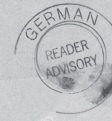 CHAPTER ONE
CHAPTER ONE
Whats That Strange Language? CHAPTER TWO
Getting Off on the Right Foot CHAPTER THREE
Smart, Stupid, or Just Plain Nuts CHAPTER FOUR
Words to Both Flatter and Insult CHAPTER FIVE
A Question of Time CHAPTER SIX
Food, Glorious Food CHAPTER SEVEN
Germanys Liquid Gold CHAPTER EIGHT
Expressing Your Ups and Downs CHAPTER NINE
Yes, You Do Need an Education CHAPTER TEN
Shake Your Moneymaker CHAPTER ELEVEN
The Wrong Side of the Law CHAPTER TWELVE
Following Doctors Orders CHAPTER THIRTEEN
Looking for Trouble and Keeping the Peace CHAPTER FOURTEEN
Life is a Cabaret, Beer Garden, or Disco CHAPTER FIFTEEN
Forbidden Pleasures CHAPTER SIXTEEN
S/Hes Got the Look CHAPTER 17
Looks Arent Everything CHAPTER 18
Love Is a Wonderful Thing CHAPTER 19
Partners and Their Private Parts CHAPTER 20
Dirty, Dirtier, and Dirtiest German To my husband Matt,
who always has the right words for me.
Karin Eberhardt
To my husband Emmanuel,
who should watch his words more carefully.
Alexis Munier Acknowledgments A heartfelt thank you to Emmanuel Tichelli, David Nuez, Jacques B., Matt Burcaw, Irmgard Eberhardt, Silke and Martin Eichholz, Doris Altmann, Anja Uske, and James Sylvester, who all took the time to get down and dirty for this book. And one last thanks to our publisher, Adams Media, and its supportive team, including Paula Munier, Matthew Glazer, Tammi Reichel, and Denise Wallace. 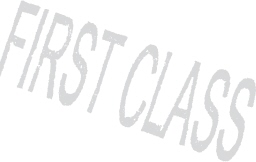 INTRODUCTION
INTRODUCTION  Ah Deutschwhile French may be considered the language of love and Spanish deemed by many the future of the United States, this steadfast Sprache has its merits as well. Not just a one-trick pony, Deutsch has been influencing Europe for centuries.
Ah Deutschwhile French may be considered the language of love and Spanish deemed by many the future of the United States, this steadfast Sprache has its merits as well. Not just a one-trick pony, Deutsch has been influencing Europe for centuries.
Used in one form or another in Germany, Switzerland, Austria, Liechtenstein, Luxembourg, and in parts of Denmark, France, Belgium, and Italy, it is also the most widely spoken second language in the majority of Eastern Europe. Some may stereotype German as harsh and unpleasant, but those lucky enough to know better are acutely aware of its logical, yet oddly romantic nature. After all, the language gave birth to romanticism, inspiring poetic and musical genius in greats like Goethe, Heine, and Brahms. Then again, it also shaped the hearts and minds of Milli Vanilli and the Governator. But how to reconcile traditional Hochdeutsch with the current state of the German tongue? Germanys own regional dialects and incomprehensible derivatives in Switzerland and Austria may leave you wondering if you have had one too many pints of Hefeweizen or are just a plain old Dummkopf. No fearTalk Dirty: German is here to give you a basic introduction into the netherworlds (and nether regions) of the true Jargon youre likely to hear in the German-speaking world. 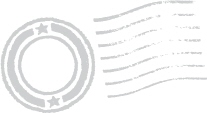 CHAPTER ONE
CHAPTER ONE 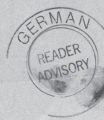 Man spricht kein Deutsch: Whats That Strange
Man spricht kein Deutsch: Whats That Strange
Language? Germany as a country did not exist until 1871, so its understandable that a unified German language struggled before that time.  CHAPTER ONE
CHAPTER ONE  Man spricht kein Deutsch: Whats That Strange
Man spricht kein Deutsch: Whats That Strange
Language? Germany as a country did not exist until 1871, so its understandable that a unified German language struggled before that time.
Made up of various Lnder, Germany has long been home to a variety of regional dialects. The first steps toward cementing a German language were taken by Martin Luther. Not Dr. King, but his older, whiter, German namesake. In both his New and Old Testament translations (1521 and 1534), Martin Luther used Schsi-che, spoken in the region of Saxony, which was the most widely understood dialect at that time. To help the good book reach as many Sndere, sinners, as possible, copies originally had a long list of vocabulary words that were translated into different regional dialects.
Even today, German pronunciation varies from region to regionwhich is why a hustler from Hamburg might have difficulties understanding what those beer-guzzling Bavarians are babbling about at Oktoberfest. Did you know that Goldilocks and Little Red Riding Hood also shared an important role in the creation of modern German? Well, not exactly, but the Brothers Grimm, famously associated with fairy tales, also published a dictionary, which was the most complete guide to German available. Then, in the twentieth century, the Duden Handbook took over as the respected guardian of the German language. More recently, a controversial spelling reform was introduced in the mid-1990s. The controversy focused on whether a language is an unmalleable cultural identity or rather a living, breathing, and constantly changing tool for communication. After a decade of bickering fueled by peppermint
Next page

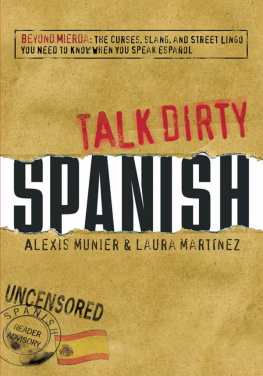
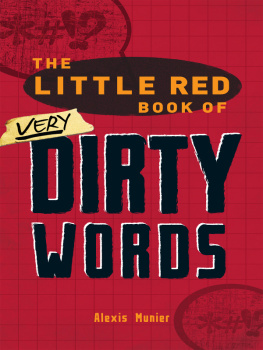
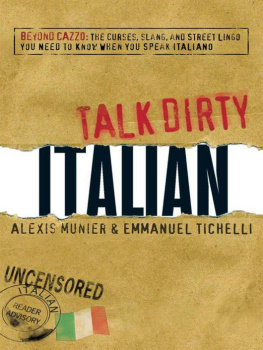
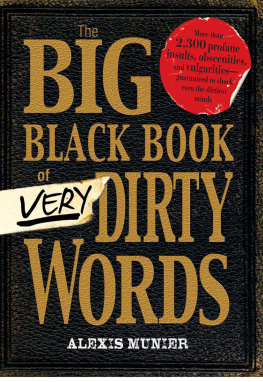
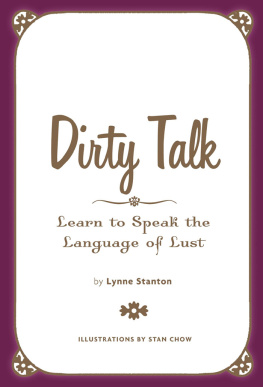
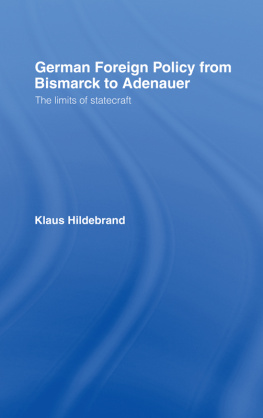
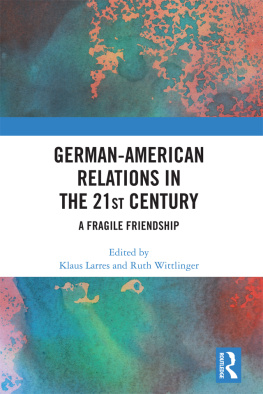
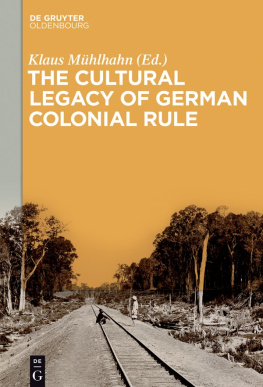


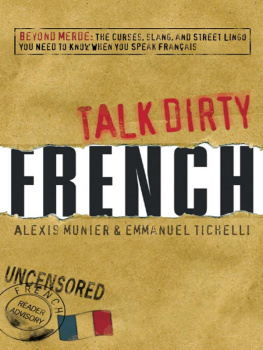

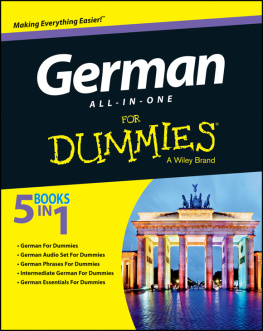


 Copyright 2009 by Alexis Munier
Copyright 2009 by Alexis Munier CHAPTER ONE
CHAPTER ONE INTRODUCTION
INTRODUCTION  Ah Deutschwhile French may be considered the language of love and Spanish deemed by many the future of the United States, this steadfast Sprache has its merits as well. Not just a one-trick pony, Deutsch has been influencing Europe for centuries.
Ah Deutschwhile French may be considered the language of love and Spanish deemed by many the future of the United States, this steadfast Sprache has its merits as well. Not just a one-trick pony, Deutsch has been influencing Europe for centuries. CHAPTER ONE
CHAPTER ONE  Man spricht kein Deutsch: Whats That Strange
Man spricht kein Deutsch: Whats That Strange